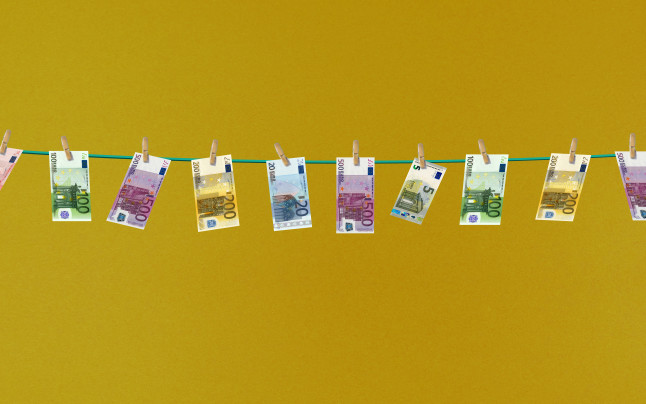Avoid money laundering: Tracking down criminals by analysing bank account details
- Detecting Financial Crime
Criminals can only use dirty money if they can ‘clean’ it – this is known as ‘money laundering’. Terrorists, meanwhile, need financing. Banks are doing everything they can to prevent these crimes. Every day, some sixteen hundred ABN AMRO employees analyse suspicious financial transactions. Read all about how we do this and why criminals are sometimes still one step ahead of us
What is money laundering?

Money laundering is the performance of financial transactions to conceal the illegal origin of funds. This money is frequently made through drug dealing, but it can also come from theft, human trafficking or corruption. These days, terrorism financing is often associated with money laundering. In that case, criminals try to conceal the destination of their funds transfers. An enormous amount of money is laundered worldwide – experts estimate that some 2,400 billion euros a year is involved in criminal transactions. And the Netherlands is the eighth most attractive country for money laundering.
Why does ABN AMRO want to tackle this problem?

‘Banking for better, for generations to come’: that is our bank’s purpose. A better world begins with our financial system being used honestly, so we don’t want a single criminal or terrorist abusing it. We’ll also be one step closer to a better world if we can track down human trafficking and labour exploitation. Analysing financial transactions smartly will help make that possible. In recent years we’ve invested heavily in combating abuse of the financial system, in part by hiring hundreds of extra people to work on this; we now have a total of around 1,600 ‘digital detectives’. We’re also investing in product innovation and digitalisation. In fact, we’re doing everything we can to do our work even more effectively. That’s more important than ever, seeing as the Dutch public prosecutor announced in September 2019 that it was starting a criminal investigation into ABN AMRO. The public prosecutor is investigating whether our client files were in order in the past and whether we reported unusual transactions and ended our relationship with certain clients on time.
How does money laundering work?

Let’s say you want to launder a hefty sum of dirty money – a million euros in cash that you made dealing drugs. You could, of course, use the money to buy groceries at the supermarket, but you wouldn’t get through all that cash in a hundred years. It would go more quickly if you bought your dream home with 50- or 100-euro notes. But the seller probably wouldn’t accept this and would report it to the police. So if you wanted to live a life of luxury with that illicit money, you’d need to ‘place’ it in the financial system. For example, by very gradually depositing it into bank accounts. Once you’ve done this, the money would need to be circulated until nobody could detect its origin and then invested in the ‘legitimate’ world.
And how do banks detect financial crime?
In many different ways. To start with, by doing customer due diligence or ‘know-your-customer’ (kyc) check. That means knowing who our clients are and understanding why they want to do business with us. Part of this involves scanning public sources fully automatically for suspicious behaviour, such as criminal convictions or newspaper articles. To do this, we use sophisticated software containing information from 100,000 public sources in 240 countries. If a company has committed fraud, for example, we refuse to take them on as a new client. If we are concerned that an existing client might be involved in money laundering, we engage with the client – and we end the relationship if they cannot convince us to the contrary. And we keep a watchful eye on high-risk clients by monitoring their transactions extra closely.
All transactions performed through the bank are analysed using smart scenarios for deviations from normal payment transactions. Every day, these scenarios generate more than one hundred unusual transactions. If our ‘financial crime investigators’ have analysed an unusual transaction and are still unable to explain it, the relationship manager phones the client and asks for clarification. If the client is unable to do so satisfactorily, we report the transaction to the Financial Intelligence Unit (FIU) through the Unusual Transactions Disclosure Office (Dutch acronym: MOT). The FIU will then look into the situation and, if necessary, call in the investigation service.
For a better world
As you can see, we’re able to detect quite a lot of financial crime. But we still miss some illegal transactions because criminals are continuously thinking up new ways of tricking the system. That’s why we constantly adapt our scenarios and introduce new and smart ways to detect unusual transactions. After all, a better world begins with our financial system being used honestly.